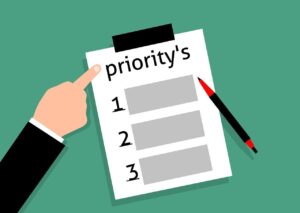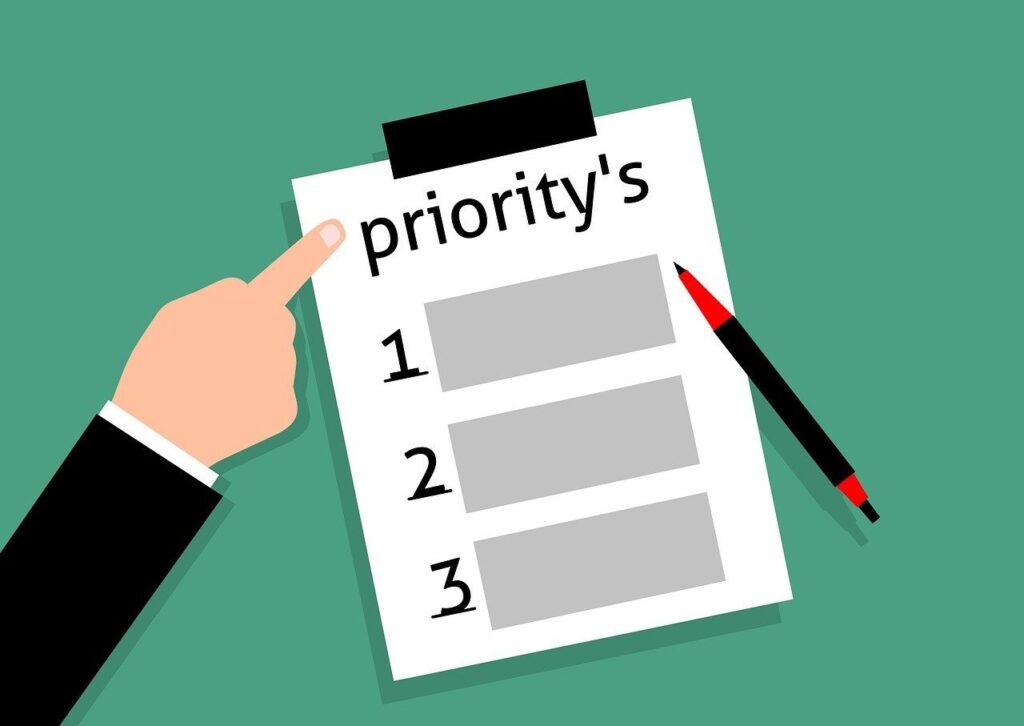You may be familiar with the saying ‘what you prioritize defines your life’. This is true in both our personal and professional lives. What we prioritize ultimately flourishes, while what we neglect tends to wither. Whether you are consciously aware of it or not, your actions reveal your priorities.

Understanding Prioritization
Silent Prioritization
Silent prioritization refers to our implicit choices without actively considering them. These choices are often driven by habits, subconscious preferences, and ingrained routines. For instance, if you find yourself consistently checking emails first thing in the morning, you are silently prioritizing your inbox over other potential morning activities like exercise, reading, or strategic planning.
With our lives consistently revolving around our phones, we’ve picked up habits that silently prioritize what we would otherwise not do—things like chatting with acquaintances on social media instead of being present with our loved ones. I get amazed at parents with young children who prefer to scroll social media taking selfies, and at the same time wish they could spent more time with their kids.
Silent prioritization also includes watching TV mindlessly instead of undertaking a beneficial exercise or pursuing a hobby you keep putting off for an ideal time. The time you could spend building yourself or exercising.
Active Prioritizing
Active prioritizing, on the other hand, involves a conscious and deliberate decision-making process. It requires identifying what is most important to you and dedicating your time, energy, and resources to those areas. This process is about setting clear goals and making intentional choices to achieve them.
It means deciding not to scroll social media before you catch up with your loved ones. It means rewarding yourself with binge watching of series after accomplishing a task or target you want to achieve. It means making a decision to give ample time to the different aspects of your life instead of delegating that to fate and chance.
At work, an employee who silently prioritizes responding to every email immediately might struggle to complete important projects on time. However, an employee who actively prioritizes their tasks by focusing on high-impact activities first is more likely to achieve more and make better progress in their work.
How can you Prioritize Effectively?
1. Identify Your Priorities
I’ve given a lot of examples on family above since this is the part a majority struggle with. However, that might not be true for everyone and everyone has a different lifestyle. It’s therefore important to reflect on what truly matters to you. This might include family, health, career, personal growth, or hobbies. Make a list of these priorities and rank them in order of importance. This exercise will give you clarity on where to focus your efforts.
2. Set Clear Goals
Once you have identified your priorities, set goals for each one. For instance, if health is a priority, a goal might be to exercise for 30 minutes five times a week. If career advancement is a priority, a goal might be to complete a professional certification within six months. Remember to have a goal for each of the areas identified above so that no one aspect is left out. I decided a few years back that I’d do a 15 minute walk every day, and have since increased that to 30 minutes a day, and it’s now seamless.
3. Create Time for Your Priorities
It’s easy to say you need to spend more time with your loved ones but not make time for them. Have a look at your schedule, reduce or eliminate time wasters, and plug in the things that are important to you. You could eliminate or reduce TV or screen time, you could reduce time spent shopping by turning to online shopping or batch shopping.
Allocate specific time slots for your top priorities and stick to them. Make sure to include buffer time for unexpected tasks or emergencies. At work, you could slot in time-blocks to focus on engaging tasks that make an impact, by keeping off interruptions like emails and phone calls.
4. Learn to Say No
One of the most challenging yet essential aspects of prioritization is learning to say no. Sometimes saying No might make you lose friends or create a strain on your relationships – that’s okay. If they’re real friends, they’ll understand your need to say no and even support you.
It might mean saying no to new tasks or request against your priorities. Learn to politely decline or suggest an alternative. This practice will help you maintain focus on what truly matters.
5. Establish Boundaries
Setting boundaries is key to protecting your priorities. Define your work hours and stick to them. Communicate these boundaries to your colleagues, family, and friends. Let them know when you are available and when you are not. This helps prevent work or other distractions from encroaching on your time.
Practical Tips for Silent Prioritization
Silent prioritization often stems from habits. By becoming more aware of your routines, you can make subtle adjustments to better align with your goals. To reduce time spent on silent prioritization, it might require that you Audit Your Time. Track how you spend your time for a week. Identify activities that consume a significant amount of time but do not contribute to your priorities. These could include excessive social media use, unproductive meetings, or unnecessary tasks.
You could then Make Small Changes and implement small changes to shift your silent prioritization. For example, if you want to prioritize reading over watching TV, place books in visible locations and set a rule to read for 20 minutes before turning on the TV.
Stary by Creating Positive Habits that support your priorities. If health is a priority, establish a morning routine that includes exercise and a healthy breakfast. If career growth is a priority, set aside time each day for learning and skill development.
Conclusion Prioritization is a powerful tool that can transform both your personal and professional life. By understanding and actively managing your priorities, you can achieve greater success and fulfillment. Remember, what you prioritize grows. Whether through silent prioritization or active prioritizing, make conscious choices that align with your values and goals. Start today by identifying your top priorities, setting clear goals, and creating a plan to achieve them. Your future self will thank you.

